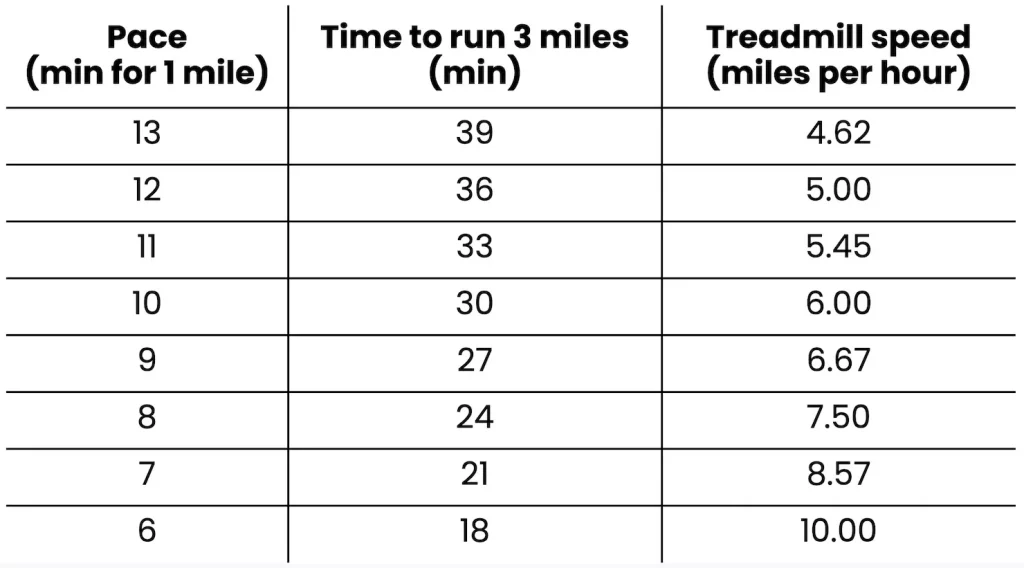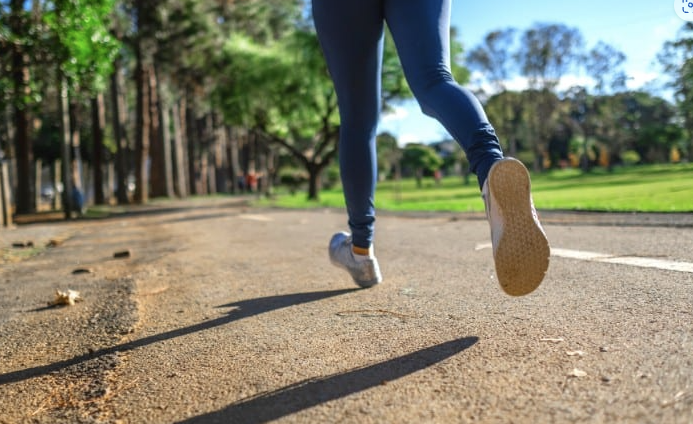How long does it take to jog 3 miles? This is a common question among both beginner and experienced runners. The answer isn’t as straightforward as you might think, with numerous factors influencing your average 3-mile run time.
In this comprehensive guide, we’ll delve into the various elements that can affect your running pace. From fitness level and stride length to running surface and even age – understanding these components will help you better gauge how long it may take for you to run 3 miles.
Whether you’re just starting out or are an elite runner looking to improve, we’ll provide valuable insights on training techniques, nutrition tips for effective workouts, and why rest days are crucial too. We’ll also discuss how terrain impacts performance and share strategies for making your workouts enjoyable.
By the end of this post, not only will you have a clearer idea about the average time it takes to jog 3 miles but also be equipped with knowledge on enhancing your physical fitness journey.
The Average Time to Jog 3 Miles
Well, the answer isn’t straightforward. The time can vary significantly depending on factors like fitness level, age, and terrain. According to Strava, an average person takes 18-35 minutes to cover this distance.

Factors Affecting Jogging Speed
Your jogging speed is influenced by several elements. Fitness level and conditioning are among the top determinants. If you’ve been training consistently, chances are high that your body has adapted well enough for faster speeds and endurance.
Beginners or those who have taken a break from regular exercise may find themselves taking longer times due to reduced cardiovascular efficiency and muscle strength.
Comparing Professional Runners’ Times with Beginners
Professional runners like Bernard Kibet Lagat can maintain impressive speeds over considerable distances. However, don’t be disheartened if you’re not quite there yet. Remember: everyone starts somewhere.
A beginner might initially take around 33 minutes or more for three miles. With consistent practice and determination, most newbies can comfortably cover this distance non-stop within four-to-six weeks.
In conclusion:
- An average person jogs three miles in about 18-35 minutes according to Strava,
- Fitness levels play a significant role in determining completion time,
- Newbie joggers should expect longer completion times but with consistency they too can improve their performance over time.
How Fitness Level Affects Jogging Speed
Your fitness level plays a crucial role in determining how long it will take you to jog three miles. Our ability to sustain a certain pace over an extended period of time depends on our fitness level.
The Impact of Age on Running Speed
As we age, our bodies naturally lose muscle mass and aerobic capacity. This can slow down our running speed significantly. According to a study by the National Center for Biotechnology Information (NCBI), older runners may be slower due to these factors. However, with regular exercise and proper nutrition, this decline can be minimized.
The Effect of Physical Conditioning on Jogging Performance
Faster runners are typically those who have conditioned their bodies through consistent training over time. They’ve built up endurance and strength that allows them to maintain a faster pace throughout the run without tiring out quickly.
Don’t fret if you’re new to running or haven’t been exercising regularly. With consistency and determination, you’ll gradually see improvements in your performance as well as overall health benefits such as weight loss and increased cardiovascular fitness.
- Tips:
- Start slow: Don’t push yourself too hard at first; start with shorter distances then gradually increase them over weeks or months.
- Mix it up: Incorporate other forms of cardio like cycling or swimming into your routine so that different muscles get worked out each week.
- Rest is important: Ensure adequate rest days between runs so your body has enough time to recover from workouts effectively preventing injuries and burnout.
Starting Out as a Beginner Runner
Don’t fret if you’re a novice jogger. Everyone starts somewhere. At first, it may take you around 33 minutes or more to cover three miles, but with consistent training and perseverance, most beginners can comfortably run this distance non-stop within four-to-six weeks.
Tips for Beginner Joggers
- Start Slow: Don’t push yourself too hard in the beginning. Begin with a comfortable pace and gradually increase your speed over time.
- Create a Schedule: Consistency is key when it comes to running. Make sure you have a regular running schedule, which will help build endurance and improve performance.
- Dress Appropriately: Wear breathable clothes suitable for the weather conditions during your runs. Also, invest in good quality running shoes.
Benefits of Consistent Training
The benefits of regular jogging are numerous – from improving cardiovascular health to boosting mental well-being. Regular runners typically report improved energy and better sleep due to their consistent physical activity.
In addition, sticking with a consistent training routine helps develop discipline and resilience – two essential qualities not only beneficial for running but also useful in other aspects of life.
Health Benefits of Regular Running
If you want to boost your overall health and well-being, regular jogging might just be the answer. This simple yet effective exercise offers numerous benefits that extend beyond physical fitness.
The Heart of the Matter
Jogging is an excellent cardiovascular workout that strengthens your heart. According to Mayo Clinic, it increases heart rate, which helps lower the risk of cardiovascular diseases such as high blood pressure and stroke.
A Stronger You
Besides strengthening your ticker, running also works out various muscle groups throughout your body. It’s not just about legs; core muscles get a good workout too. And let’s not forget those arms swinging back and forth with each stride. All these contribute towards improved body strength, better posture, and increased confidence.
Weight Loss Goals within Reach
For those looking to reduce their weight or stay in shape, adding jogs into the mix could be a great way to achieve desired results faster than just dieting. A 30-minute jog can burn approximately 250-300 calories depending on intensity, according to Healthline. That adds up significantly over time.
Mental Health Boosts Too
But it doesn’t stop at physical benefits – there are mental perks too. Jogging has been shown to reduce stress levels while boosting mood thanks largely to endorphins released during exercise, often referred to as “runner’s high”. So next time you’re feeling down or stressed, consider lacing up your shoes and heading out for a quick run – it could do wonders for your spirit.
Ensuring Safe and Effective Runs
Safety should be paramount when engaging in running activities. Improper gear or lack of stretching can lead to injuries, so it’s crucial to take the necessary precautions. Additionally, proper nutrition and hydration are key components to a successful workout. Let’s dive into these aspects in more detail.
Proper Gear for Safe Runs
Choosing the right running shoes is essential for optimal performance and injury prevention. Look for shoes that provide good support, cushioning, and fit well. Wearing the wrong size or type can result in blisters, shin splints, or even stress fractures.
Moisture-wicking clothing is also a great investment, as it helps keep you dry during your runs by drawing sweat away from your body. And don’t forget about your feet – a quality pair of running socks can prevent blisters and provide additional comfort.
Nutrition Tips for Effective Workouts
Eating a balanced diet is crucial for fueling your workouts effectively. Consume meals that include complex carbs, protein, and fruits/veggies for optimal nutrition prior to workouts.
- Pre-Run: Opt for easily digestible carbs like bananas or oatmeal about 1-2 hours before jogging.
- During Run: If you’re planning on running longer than an hour, consider consuming quick sources of energy such as sports drinks or gels.
- Post-Run: Aim for a mix of proteins and carbs within 30 minutes after finishing your run to aid in muscle recovery.
Remember, staying hydrated is equally important. Water regulates our body temperature, keeps joints lubricated, helps transport nutrients, and gives us energy. Make sure to drink enough water throughout the day, not just during exercise sessions.
Rest Days Are Important Too
As much as we love the thrill of jogging and pushing our limits, it’s equally important to understand that rest days are a vital part of any effective training regimen. Taking a break from physical activity is key for allowing the body to recuperate and avoid exhaustion or harm.
Understanding The Importance Of Rest Days
The importance of rest days cannot be overstated. They give your muscles time to repair themselves after strenuous activity. During this period, muscle fibers rebuild stronger than before – a process known as hypertrophy. This is when real progress happens.
Besides physical recovery, rest days also contribute significantly towards mental well-being. Regular exercise can sometimes lead to fatigue which in turn affects motivation levels negatively. Taking scheduled breaks helps maintain enthusiasm for running while reducing the risk of overtraining syndrome – a condition characterized by persistent fatigue, decreased performance, and mood swings among other symptoms.
To maximize benefits from rest periods:
- Maintain proper hydration: Water aids in flushing out toxins accumulated during workouts.
- Eat balanced meals: Proper nutrition supports the muscle recovery process by providing necessary nutrients like proteins for rebuilding tissues.
- Sleep adequately: Quality sleep enhances overall recovery, promoting better performance in future runs.
Incorporating active recovery activities such as light stretching or yoga on off-days can further enhance flexibility and improve blood circulation, thereby speeding up the healing process. Remember though, these should be low-intensity exercises aimed at relaxation rather than exertion.
A well-structured workout plan always includes sufficient downtime to ensure optimal health and athletic progression. So next time you feel guilty about taking a day off, remember, even elite athletes need their downtime too. It’s all about balance between work and play – or in the case of runners, run and relax. Happy resting.
The importance of rest days in a workout regimen cannot be overstated. Resting allows the body to recover from intense workouts, both physically and mentally. To maximize benefits from rest periods, it’s important to maintain proper hydration, eat balanced meals, sleep adequately and incorporate active recovery activities like light stretching or yoga on off-days.
Making Your Workouts Fun And Enjoyable
Running doesn’t have to be a chore. In fact, it can be one of the most enjoyable parts of your day if you approach it with the right mindset and strategies. To maximize the pleasure of running, try these tips.
Celebrate Small Victories
Take a moment to recognize your accomplishments, such as running for five minutes without stopping or completing your first three-mile jog. Whether that’s running for five minutes without stopping or completing your first three-mile jog, these small victories deserve recognition. They’re proof of your progress and dedication.
Set Achievable Goals
A goal gives direction to our efforts. Set achievable goals for yourself such as increasing distance gradually or improving speed over time. This will give you something tangible to work towards and keep motivation high.
Reward Progress
Rewards can serve as powerful motivators too. After reaching each goal, reward yourself with something special like a new pair of running shoes or an extra hour on Netflix.
The Rewards Of Running: How To Celebrate Your Successes
Make The Activity Enjoyable
If possible, try jogging in beautiful surroundings – parks, beaches, or trails offer scenic views that can make runs more pleasurable. You could also run with friends – having someone else along for the ride not only makes things more entertaining but also encourages accountability.
How To Make Running Fun: Tips For Keeping Motivation High While Jogging With Friends Or Alone
Understanding Impact Terrain on Performance
Different terrains can significantly impact your running performance. Whether you’re jogging on a treadmill, pavement, or trail, each surface presents unique challenges and benefits.
Choosing the Right Surface to Run
The first step in understanding terrain’s effect on your run is choosing the right surface. Each type of terrain has its pros and cons, so it’s essential to consider them before starting your jog.
- Treadmill: Treadmills offer controlled conditions where you can adjust speed and incline at will. However, they don’t replicate outdoor running perfectly due to lack of wind resistance and variations in ground surfaces.
- Pavement: Pavements are convenient for city dwellers but can be hard on joints due to their hardness.
- Trail: Trail runs provide softer surfaces that are easier on joints but come with an increased risk of tripping or twisting an ankle due to uneven grounds.
Incorporating different types of terrains into your training routine could help improve strength, agility, balance while reducing boredom from monotonous workouts.
Navigating Weather Conditions and Road Variables
Aside from the running surface, weather conditions can also significantly affect your 3-mile jog time. For instance:
- Rainy days may slow down pace because wet pavements increase slip risks.
- Snowy roads require careful navigation, which might reduce overall speed.
- A hot sunny day could lead to dehydration if not properly hydrated, leading to fatigue and slowing down progress.
No matter what type of terrain or weather condition you face during runs, remember the importance of proper gear and hydration to ensure safety and effectiveness of your workout sessions. Also, always listen to your body, know when to push harder or take it easy to avoid injuries. Remind yourself to savor the journey instead of just striving for a swift end result.
The impact of different terrains on running performance is significant, and choosing the right surface can make a big difference. Treadmills offer controlled conditions but lack wind resistance, pavement can be hard on joints, while trail runs provide softer surfaces that come with an increased risk of injury due to uneven ground. Weather conditions also play a role in determining how long it takes to jog three miles; rainy days may slow down pace due to slip risks, snowy roads require careful navigation and hot sunny days could lead to dehydration if not properly hydrated. Proper gear and hydration are essential for safety and effectiveness during workout sessions.
Motivation and Perseverance in Achieving Milestones
Understanding the distance of a mile is crucial for any jogger. It helps you plan your runs and set achievable goals. The fastest recorded completion time for a mile is 3 minutes and 43 seconds, held by Bernard Kibet Lagat. Talk about determination and perseverance.
No need to be a pro athlete to reach your fitness aspirations. Take Amanda Mae Renkel, founder of Mae’s Miles & Music, for example. She started as an average runner and gradually improved her speed through consistent training and sheer willpower. Her story is a testament to the power of setting your own goals and working hard to achieve them.
Determination
Setting a goal like jogging three miles non-stop requires immense determination. It might seem difficult, but every stride you make gets you nearer to your aim. Don’t give up.
Persistence
There will be days when you feel like skipping your run due to fatigue or lack of motivation. But persisting despite these challenges is key to reaching your milestone. Keep pushing forward.
Rewarding Progress
Celebrate each small victory along the way, whether it’s shaving off a minute from your previous best time or simply completing another day without missing your jog. Every little bit counts.
Ultimately, achieving any milestone comes down to two main factors: motivation and perseverance. So lace up those running shoes, set realistic targets for yourself, and keep pushing forward no matter how tough things get. Before long, you’ll be achieving things beyond your wildest dreams.
Conclusion
How Fast Can You Jog 3 Miles?
Discover the average time it takes to jog three miles and the factors that affect running speed, including fitness level, age, physical conditioning, and terrain.
For beginners, we recommend starting slow and gradually increasing speed and distance to prevent injury and build endurance.
Proper gear, such as supportive shoes and breathable clothing, is essential for safe and comfortable runs, while a balanced diet and hydration are crucial for optimal performance.
Rest days are just as important as training days, allowing the body to recover and prevent burnout.
Stay motivated and focused on your goals, celebrating milestones along the way and pushing through challenges with perseverance.







